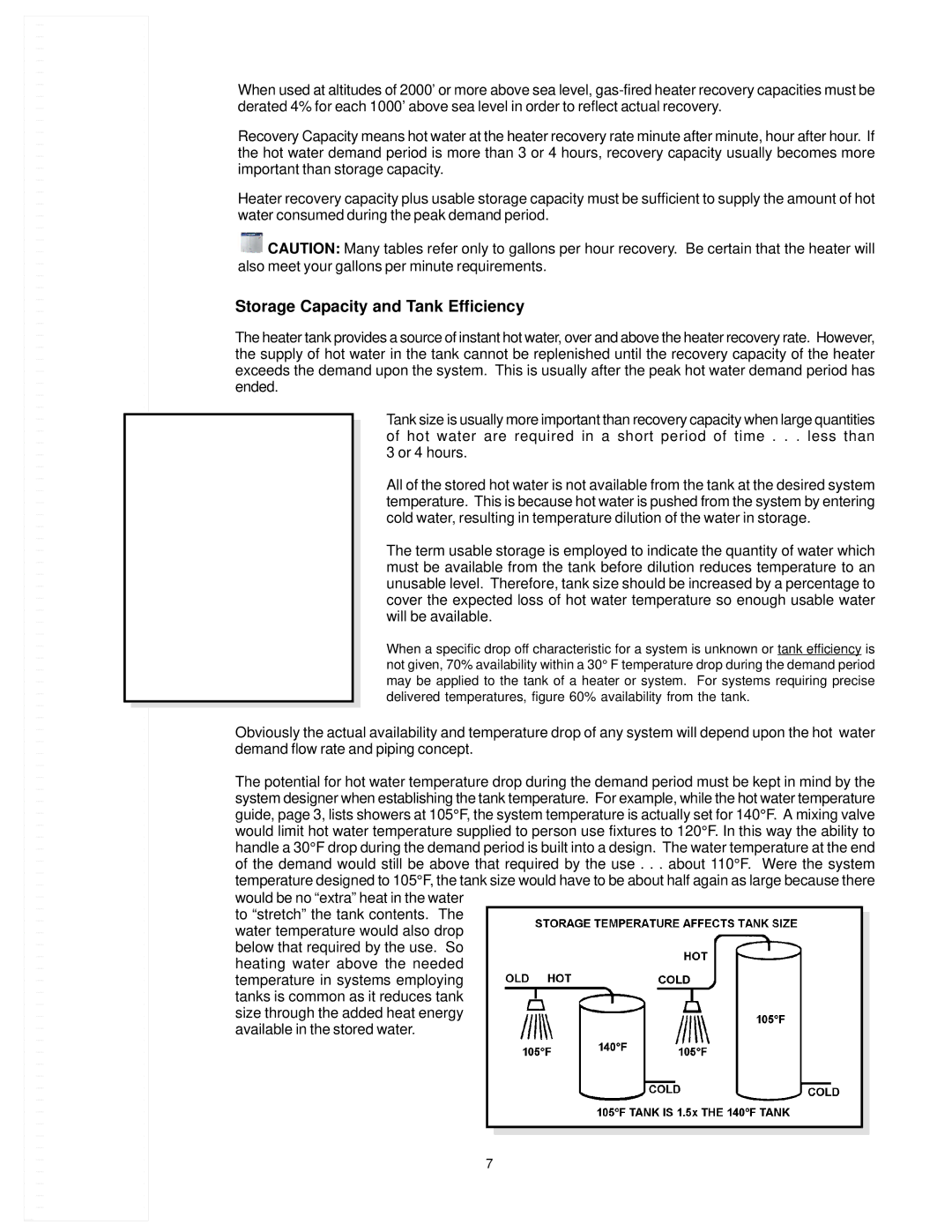
123456789011
When used at altitudes of 2000’ or more above sea level,
Recovery Capacity means hot water at the heater recovery rate minute after minute, hour after hour. If the hot water demand period is more than 3 or 4 hours, recovery capacity usually becomes more important than storage capacity.
Heater recovery capacity plus usable storage capacity must be sufficient to supply the amount of hot water consumed during the peak demand period.
![]() CAUTION: Many tables refer only to gallons per hour recovery. Be certain that the heater will also meet your gallons per minute requirements.
CAUTION: Many tables refer only to gallons per hour recovery. Be certain that the heater will also meet your gallons per minute requirements.
Storage Capacity and Tank Efficiency
The heater tank provides a source of instant hot water, over and above the heater recovery rate. However, the supply of hot water in the tank cannot be replenished until the recovery capacity of the heater exceeds the demand upon the system. This is usually after the peak hot water demand period has ended.
Tank size is usually more important than recovery capacity when large quantities of hot water are required in a short period of time . . . less than 3 or 4 hours.
All of the stored hot water is not available from the tank at the desired system temperature. This is because hot water is pushed from the system by entering cold water, resulting in temperature dilution of the water in storage.
The term usable storage is employed to indicate the quantity of water which must be available from the tank before dilution reduces temperature to an unusable level. Therefore, tank size should be increased by a percentage to cover the expected loss of hot water temperature so enough usable water will be available.
When a specific drop off characteristic for a system is unknown or tank efficiency is not given, 70% availability within a 30° F temperature drop during the demand period may be applied to the tank of a heater or system. For systems requiring precise delivered temperatures, figure 60% availability from the tank.
Obviously the actual availability and temperature drop of any system will depend upon the hot water demand flow rate and piping concept.
The potential for hot water temperature drop during the demand period must be kept in mind by the system designer when establishing the tank temperature. For example, while the hot water temperature guide, page 3, lists showers at 105°F, the system temperature is actually set for 140°F. A mixing valve would limit hot water temperature supplied to person use fixtures to 120°F. In this way the ability to handle a 30°F drop during the demand period is built into a design. The water temperature at the end of the demand would still be above that required by the use . . . about 110°F. Were the system temperature designed to 105°F, the tank size would have to be about half again as large because there would be no “extra” heat in the water
to “stretch” the tank contents. The water temperature would also drop below that required by the use. So heating water above the needed temperature in systems employing tanks is common as it reduces tank size through the added heat energy available in the stored water.
7
